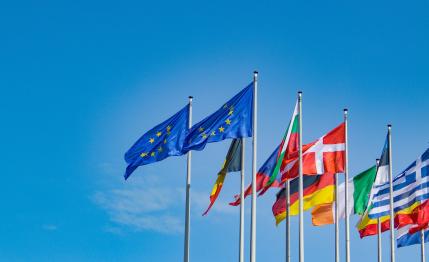EU and UK commit to linking emissions trading systems in landmark cooperation agreement

On 19 May 2025, the European Commission and the UK Government have announced their commitment to establish a link between their respective emissions trading systems (ETS), marking a significant milestone in bilateral climate cooperation following Brexit. The announcement, part of the Common Understanding presented at the end of the EU-UK Summit in London, outlines a framework for linking the EU ETS and the UK ETS through a formal agreement.
The agreement will lay out groundwork for the establishment of a formal link between the systems, a move expected to stabilize carbon prices and accelerate emissions reductions in both jurisdictions. Once implemented, allowances issued under either the EU ETS or UK ETS will be mutually recognized for compliance in both systems. This will enable regulated entities under the EU ETS or UK ETS to seamlessly trade allowances, increasing the size of the allowance market and enhancing its stability and efficiency. Additionally, the linking agreement should create the conditions for mutual exemptions from the respective Carbon Border Adjustment Mechanisms (CBAM), contingent on compliance with relevant legislation.
A key pillar of the agreement is the dynamic alignment of the UK with EU rules that underpin the functioning of the ETS link, giving due regard to the UK’s legal and legislative procedures. This alignment will ensure that both systems evolve coherently and preclude the emergence of market distortions. To ensure that it can put forward its view on matters relevant for the ETS link, the UK should be involved at early stages of EU policymaking subject to considerations regarding the UK’s status as a non-Member State of the EU.
To address disputes, the agreement should provide an independent and arbitration-based resolution mechanism, with the Court of Justice of the EU serving as the ultimate authority on matters of EU law.
Additionally,
- The scope of the linking agreement should include the sectors of electricity generation, industrial heat generation, industry, domestic and international maritime transport, and domestic and international aviation, with provisions to expand coverage in the future.
- While the UK cap and reduction pathway will remain guided by the country’s obligations under the Climate Change Act and its Nationally Determined Contributions (NDC), they should be at least as ambitious as the EU cap and reduction pathway.
- Mutual exemptions from each party's respective CBAMs will reduce administrative burden and potential trade frictions between the jurisdictions. The UK government estimates the exemption could prevent approximately £800 million in potential CBAM payments of UK exporters by 2030.
The intended linkage is expected to create a more liquid and stable carbon market, reducing costs for businesses and encouraging green investments. Both parties have emphasized that the linkage should not constrain their ability to pursue higher climate ambition, consistent with their net-zero commitments.
The next steps involve technical negotiations to operationalize the ETS link according to timelines to be announced later this year. The European Commission will now seek authorization from the Council to formally launch negotiations for the linking agreement.
Update: On 12 November 2025, EU countries unanimously backed a negotiating mandate for the European Commission to begin talks with the UK on formally linking their emissions trading systems, marking a key step towards deeper post-Brexit carbon market cooperation. The Commission can now use this mandate to launch formal negotiations with the UK, with technical work on the detailed design of the linkage expected to unfold over the coming months.


